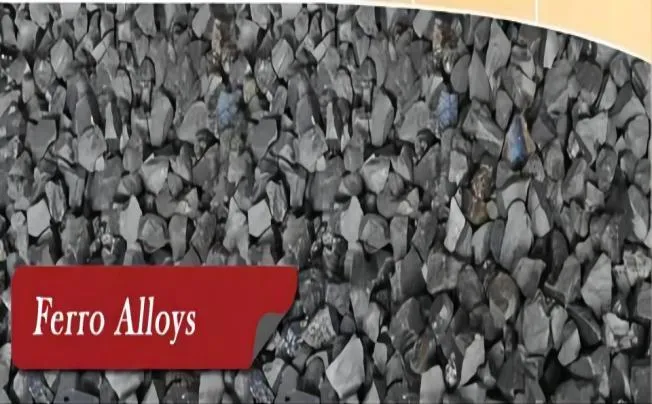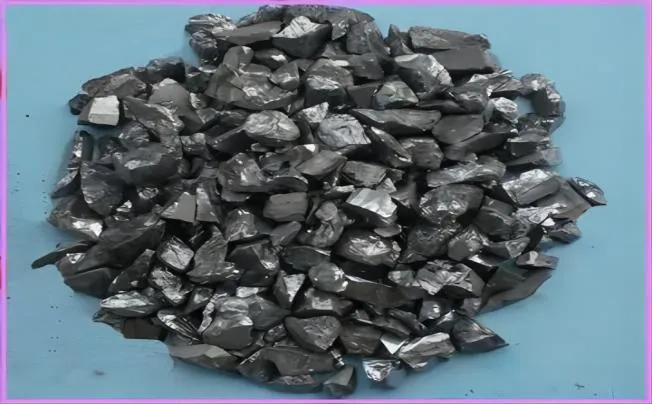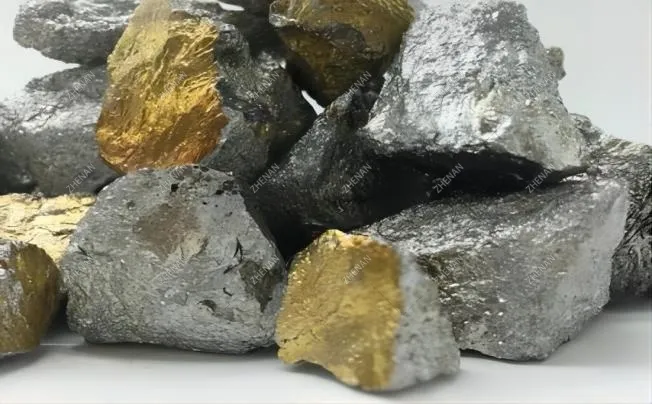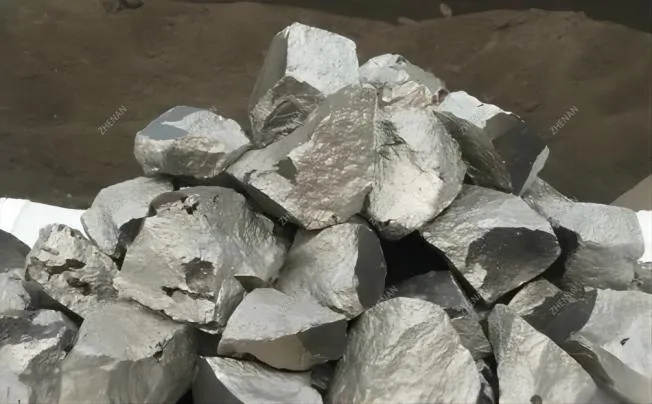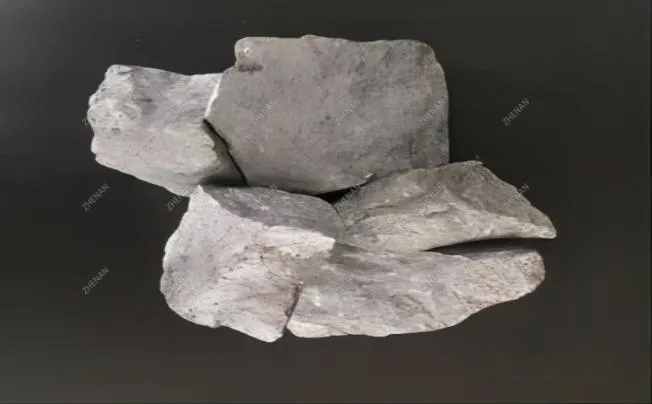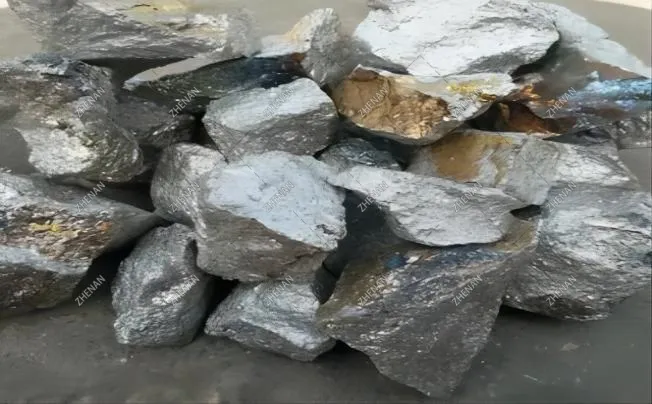Ferrotitanium is a titanium and iron alloy that typically includes 10–20% iron, 4–75% titanium, and a trace quantity of carbon. It was first discovered by W. Gregor in 1798, and H. Moissan only partially refined it in 1895.
With sulfur, carbon, and oxygen, titanium is a highly reactive metal. Additionally, it may combine nitrogen to produce insoluble molecules and isolate them in the slag. It is used for deoxidation as a consequence, as well as rarely for desulfurization and denitrification. Steel is transformed into a metal with a finer grain structure when titanium is added. By mixing trash and titanium sponge with iron and heating the combination in an induction burner, ferrotitanium can be produced as an alternative.
It can be produced by melting scrap titanium with steel or iron in an induction furnace. The alloy is highly reactive with nitrogen, oxygen, carbon, and sulfur and produces insoluble compounds. Some of its attributes are low density, high strength, and outstanding corrosion resistance.
More information on ferrotitanium is provided in the section that follows.
What is the Chemical Composition of Ferrotitanium?
Titanium (Ti): Between 30% and 70%
Iron (Fe): between 30% and 70%
Due to the raw materials used or the manufacturing process, ferrotitanium may potentially contain trace amounts of additional contaminants or elements in addition to these two primary ones. The following elements, or impurities, are frequently found in trace amounts: carbon (C), nitrogen (N), and oxygen (O). Sintering (Si) Manganese (Mn), Aluminium (Al) Chromium (Cr) and vanadium (V)
These impurities’ or other elements’ concentrations can differ based on the quality of the raw materials, the refinement procedures used, and the planned use of the ferrotitanium.
Physical Properties of Ferrotitanium
| General | The melting point and density of ferrotitanium depend on its titanium content | |||
| Abrasion | good resistance to abrasion | |||
| Corrosion | good resistance to corrosion | |||
| Gravity | high specific gravity | |||
| Magnetism | high magnetism | |||
| Density | Melting Point | |||
| FeTi 30 | 6,2 g/cm³ | 0,224 Ib/in³ | 1350-1500 °C | 2462-2732 °F |
| FeTi 40 | 5,9 g/cm³ | 0,213 Ib/in³ | 1300-1480 °C | 2372-2696 °F |
| FeTi 50 | 5,5 g/cm³ | 0,199 Ib/in³ | 1300-1480 °C | 2372-2696 °F |
| FeTi 70 | 5,4 g/cm³ | 0,195 Ib/in³ | 1070-1140 °C | 1958-2084 °F |
What is Ferrotitanium Used For?
There are several uses for ferrotitanium across numerous sectors. Here are a few typical examples:
1. Steelmaking: The production of steel frequently uses the inclusion of ferrotitanium. It serves as a cleaning agent for steel, removing impurities and improving the metal’s overall quality. By using titanium, steel’s grain structure, mechanical properties, and corrosion resistance can all be enhanced.
2. Alloying agent: Ferrotitanium is used as an alloying agent in the production of a variety of alloys. It is combined with other metals, such as aluminium, to improve their strength, corrosion resistance, and other desired properties. Ferro titanium is also used to produce ultra-low-carbon steel for use in automobiles and household appliances.
3. Deoxidation and desulfurization: The reactive properties of ferrotitanium make it a powerful deoxidizer and desulfurizer of steel. It combines with oxygen and sulfur during the steelmaking process to generate insoluble compounds, which are ultimately eliminated as slag.
4. Denitrification is another use for ferrotitanium and allows steel to be nitrogen-free. Nitrogen can affect steel’s mechanical properties; hence, ferrotitanium addition helps reduce nitrogen content.
5. Pyrotechnics: Ferrous titanium powder can be used as a fuel in some pyrotechnic materials to help create sparks and bright flashes in fireworks and other pyrotechnic displays.
6. Other applications for ferro titanium include the production of tools, military and commercial aircraft, stainless steel and steel processing equipment, paint, and more.
Manufacture Process of Ferrotitanium
1.Raw material selection: Iron and titanium oxide, typically derived from ilmenite or rutile, are the two main raw materials utilized in the manufacturing of titanium ferroalloys. To guarantee the resulting alloy has the appropriate qualities, these materials’ purity and quality are carefully chosen.
2. Crushing and grinding: To improve the surface area of the chosen raw materials and encourage more efficient chemical reactions during the alloying process, crush and grind them into small particles.
3. Mixing: Combine the necessary amount of finely ground titanium oxide and iron powder. The mixing procedure makes sure that both components are distributed equally, which is essential to attaining consistent alloy characteristics.
4. Alloying: A high-temperature electric arc furnace is next used to alloy the combined powder. The raw materials are melted by the furnace’s tremendous heat, which also causes them to interact with one another. An alloy of titanium and iron is created by the reduction of titanium oxide to titanium metal as the temperature rises.
5. Refining: To remove impurities, the molten ferrotitanium can be refined once the alloy is created. A purer final product will be produced by using processes like slagging or fluxing to remove undesirable elements or compounds from the alloy components.
6. Casting: The alloy is cast into a mold or ingot while it is still molten after being refined to the requirements. This makes it easier to handle and transport ferrotitanium for later processing or use in a variety of industries.
7. Cooling and solidification: The titanium iron is solidified by gradually cooling the mold that is holding the molten alloy. By ensuring the finished product has the desired qualities and preventing the production of unwanted microstructures, controlled cooling aids.
8. Finishing and sizing: To achieve the shape, size, and surface polish required for a particular application, titanium ingots or castings may go through further processing procedures such as cutting, grinding, or machining after solidification.




